“Fossils,” says Chhering Namdol, and then repeats himself slowly, amused at our surprise. “Fossils of animals that lived in the sea.” Our home stay host’s matter of factness clashed incongruously with our disbelief..
Incredulity transitioned quickly to awe as we imagined the foreboding snow-clad Himalayan peaks around us as dormant giants that lay submerged beneath the sea while the dinosaurs still roamed the earth.
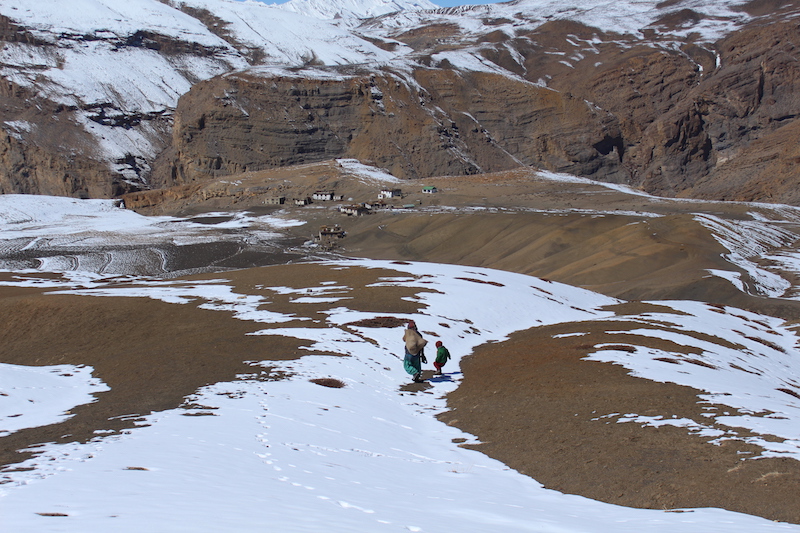
Chhering proceeds to tell us that we could take a spade to any spot in Langza and the surrounding mountains and we would be able to unearth fossils.
At approximately 4400m above sea level, the fossils found in the village of Langza in the cold desert of Spiti Valley, bear testimony to the collision of the Indian and Eurasian tectonic plates that led to the formation of the Himalayas in the Cenozoic period, nearly 50 million years ago.
As the two plates edged closer to each other, they closed the Tethys Sea that lay between them. The fossils of molluscs that inhabited the Tethys Sea lay scattered abundantly in the Spiti region as witnesses to one of the most powerful geological formations in the history of the earth.
Chhering, who lives in Kaza 15 kilometres away, suggests that we knock on any of the doors in Langza and ask for fossils. A walk down the village path, that is watched over by an imposing statue of the Buddha and the Chau Chau Khang Nilda peak, did not disappoint us.
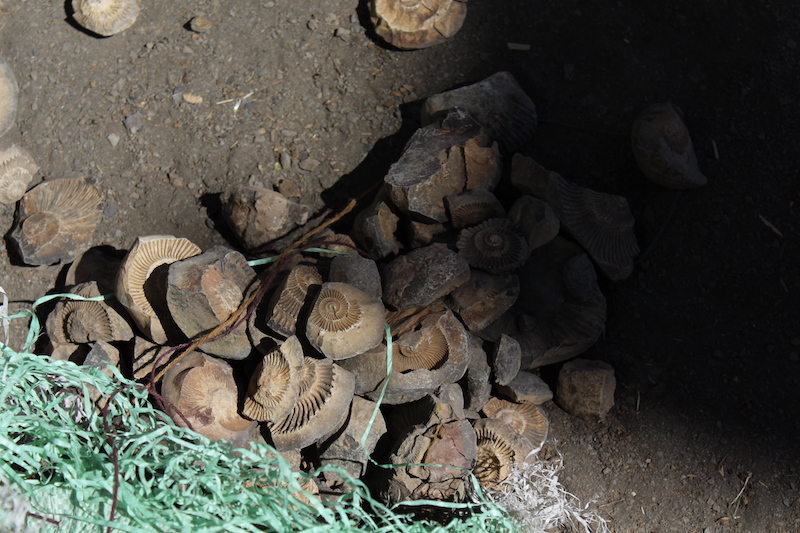
A home stay owner in the vicinity brought out an entire sack filled with fossils with intricate spiral patterns on them.
Professor Rajeev Patnaik at the Department of Geology, Punjab University confirms that the fossils we came across at Langza belong to the late Jurassic Age and are approximately 150 million years old.
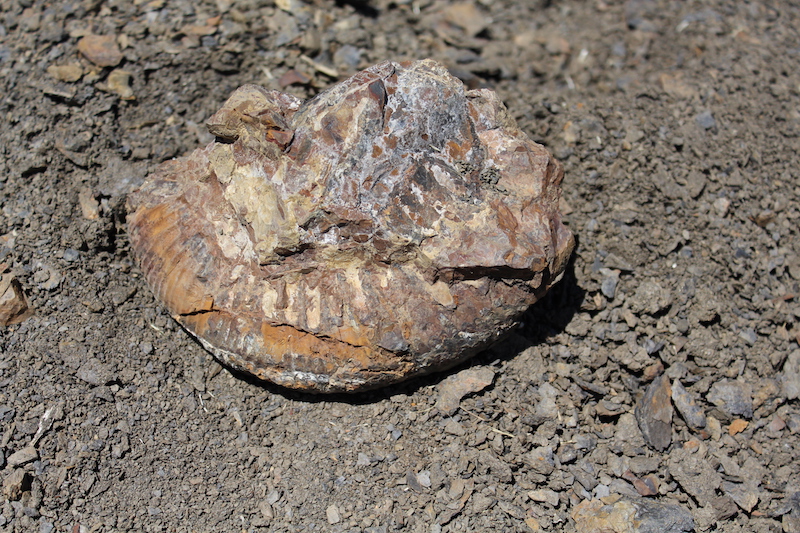
“These are ammonites and are quite common in the Spiti region,” said Patnaik to Hill Post in reply to an email query.
Ammonites were marine predators with a spiral shell that became extinct around the same period as the dinosaurs – 65 million years ago. They were known to breed prolifically, resulting in a large number of ammonite fossils.
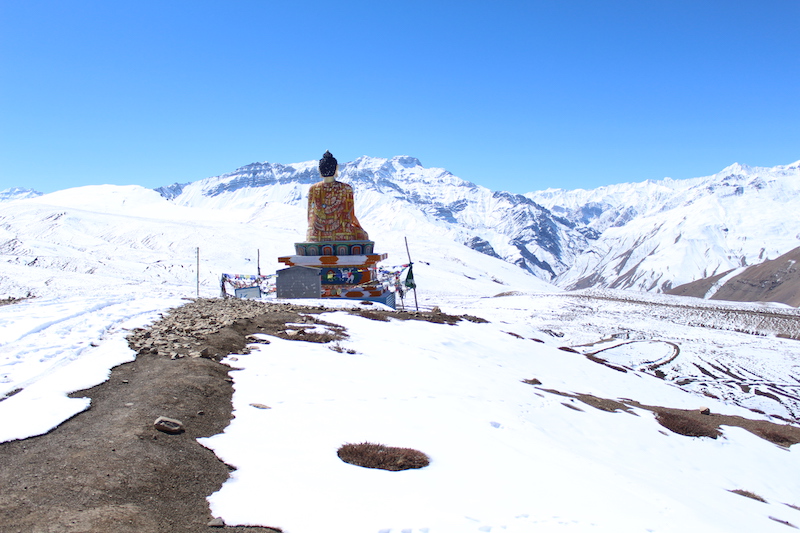
The Spiti Valley has attracted geologists from the 19th century onwards, with pioneering palaeontological contributions being made by Stoliczka in 1866 and Hayden in 1904.
The valleys formed by the Pin and Spiti rivers are rich in fossils. Besides Langza, fossils and corals have also been found in Mudh and Guling.
Narendra Kumar Swami, a geologist with the Himalayan Geology Division, Geological Survey of India, says, “Geologically the Langza section consists of Tagling (bedded limestone) and Spiti Formation (black shales) and ranges from the Lower to Upper Jurassic period.”
During his visit to and study of the region in 2016, he has found marine fossils like ammonites, terebratulids, belemnites and oysters from the area.
Chhering tells us that the children of Langza collect the fossils and sell them to tourists as souvenirs.
“I have seen an old lady in the Kaza market sell a huge fossil with very intricate patterns for just three hundred rupees,” he says.
Has the local community not been informed about the significance of these fossils in determining geological patterns and evolution?
“The scientists come, but they don’t tell us what they have found. Only one scientist told me that this whole area was once under the sea,” he shrugs.
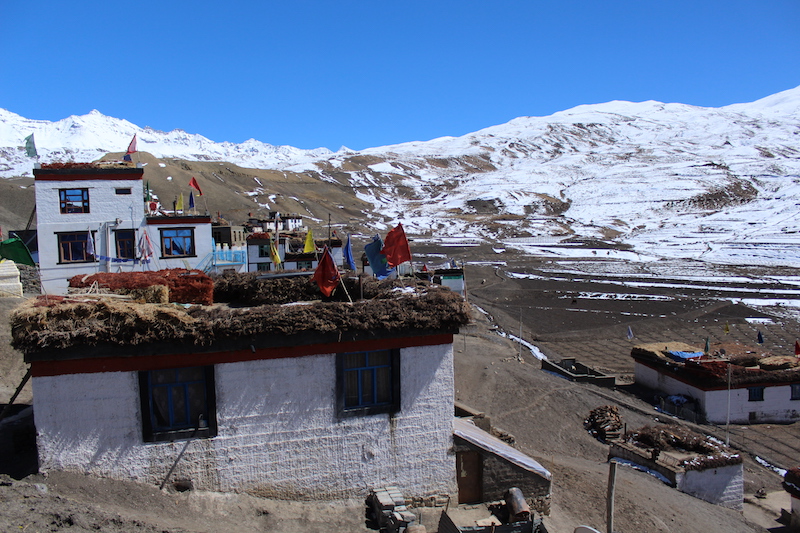
Ishita Khanna, the founder of Spiti Ecosphere, a social enterprise that focusses on eco friendly tourism and conservation efforts in the Spiti Valley in collaboration with the local community, says, “Spiti is considered one of the most fossil rich areas in the world by the Geological Survey of India and the Geological Society of America. But, our efforts to prevent the locals from selling fossils has backfired.”
Ecosphere has been trying to educate the local community about the geological history of the region and train local artisans in making fossil replicas out of mud to generate income and offer souvenirs to tourists that will not damage the surrounding ecosystem. Langza derives its name from mud art, but the skill has nearly died out.
The fossils are valuable to them, but not valuable enough to want to keep it within the valley.
“Even if we educate the elders about their value, it is difficult to do the same with the children. They would rather sell the smaller ones for ten or twenty rupees and get a chocolate instead,” says Ishita.
“With tourists coming in, it is difficult to keep track. If a tourist picks up a fossil and puts it into their bag, it’s not going to be possible to track that bag. The laws are clearly not stringent enough,” she rues.
Several travel companies in the region organise fossil hunting excursions for tourists.
The proprietor of one such company that specialises in trips and treks around the region informed me that if I wanted to collect fossils, picking up one or two could not do much harm.
In an apparent contradiction he adds that the fossils could disappear completely in a few years.
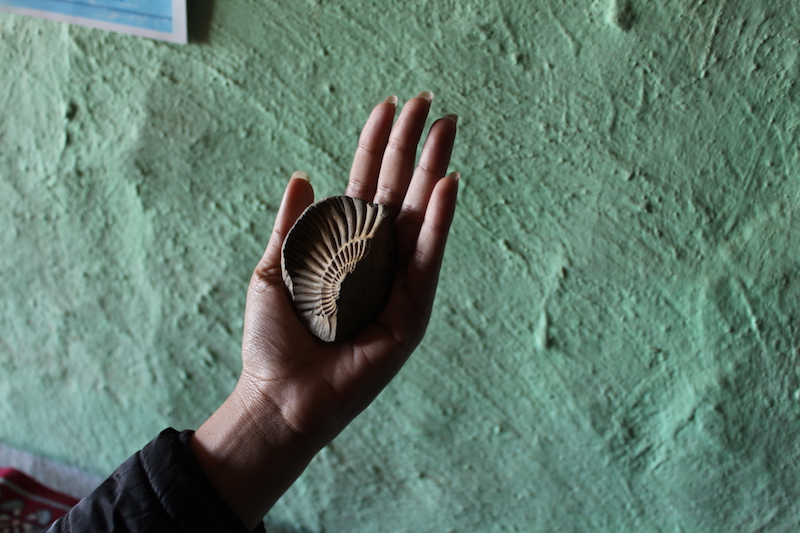
Dr. Om Narain Bhargava, retired Director of the Geological Survey of India and Honorary Professor at the Geology Department, Punjab University, says, “The fossils are being sold ever since a network of roads developed and tourists started flooding these areas. There are strict rules regarding preservation of fossils. In fact customs at airports are supposed to check that no fossil is taken out of the country, except for research, and in such cases the fossil has to be finally returned to the National Repository. But no one takes it seriously.”
A trip to the Himachal State Museum in Shimla is surprising – there are no fossils from Spiti on display.
An email sent to the museum asking about the fossils received the following response – “Sorry we have no such information and museum had not worked so far on this field.”
Dr. Bhargava tells me via email, “I am surprised that at Shimla they did not know about Langza which is world famous for ammonoid fossils, commonly known as Shaligram.”
Can this be attributed to government apathy?
“There is a general apathy, not only in Himachal Pradesh, but in other states also regarding the geological monuments and heritage. As a result we have lost many valuable assets during road construction and other civil structures,” says Dr Bhargava.
The fossils could soon become as vulnerable as the snow leopard – another elusive celebrity that Langza is popular for.
Photos by Abhinaya Harigovind
A graduate with history honours from St. Stephen’s College, Delhi, Abhinaya is sharpening her writing skills to be a print journalist.



